Instead of focusing on active addresses to study blockchain activity, it is better to look at network fee metrics.
Author: Donovan Choy
Compiled by: Deep Tide TechFlow
Better Use of Blockchain Metrics
Blockchains generate a vast amount of public data. On Crypto Twitter, people constantly compare Blockchain A and Blockchain B, and investors, researchers, and opinion leaders (KOLs) have many metrics to reference when defending their views. However, the misuse of these numbers often obscures people's understanding of the field.
In today's 0xResearch article, we will explore three metrics and the issues surrounding them: active addresses, blockchain "profitability," and total value secured.
Active Addresses
"Active addresses" refer to how many active, paying users there are on a particular protocol.
The statement "Facebook has three billion monthly active users" is useful information that tells us something about this social network. Since spammers do not have enough profit opportunities to flood Facebook, active addresses are a good way to assess the platform's true value to consumers.
However, for blockchains, the value of active addresses diminishes due to the ease of creating new wallets and the obvious opportunities to profit through airdrops or protocols.
For example, the chart below shows a clear case: Solana had the most daily active addresses in the past month, making it appear very active.
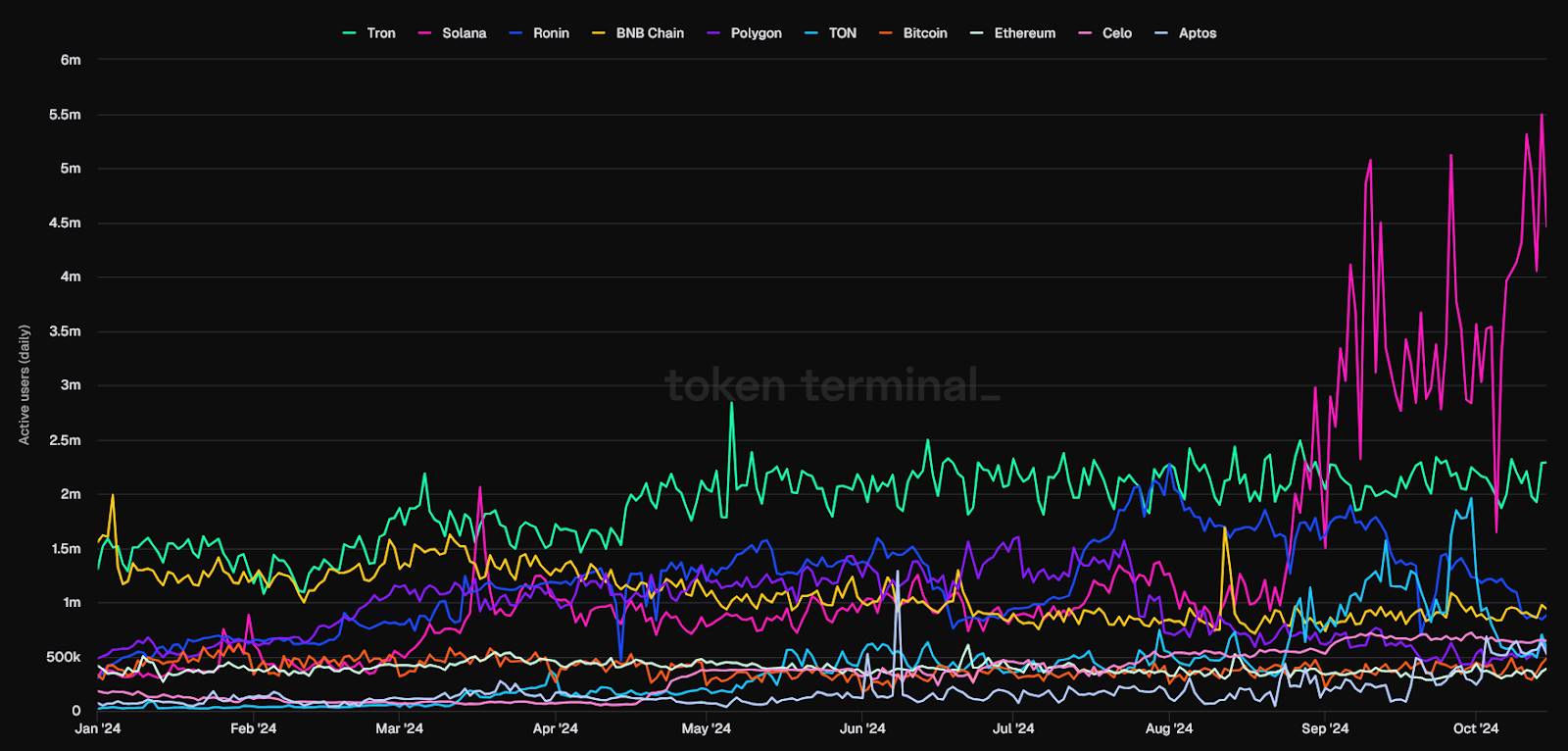
Source: TokenTerminal
Most Solana users trade on decentralized exchanges (DEXs), so we need to closely observe activity on DEXs. When we delve into the active addresses on Solana's DEX, we find that in the past day, most addresses—about 3.4 million out of a total of 4.4 million—had a lifetime trading volume of less than $10.
This indicates that due to Solana's low transaction fees, there may be a significant amount of spam or bot activity rather than a large number of "quality" users.
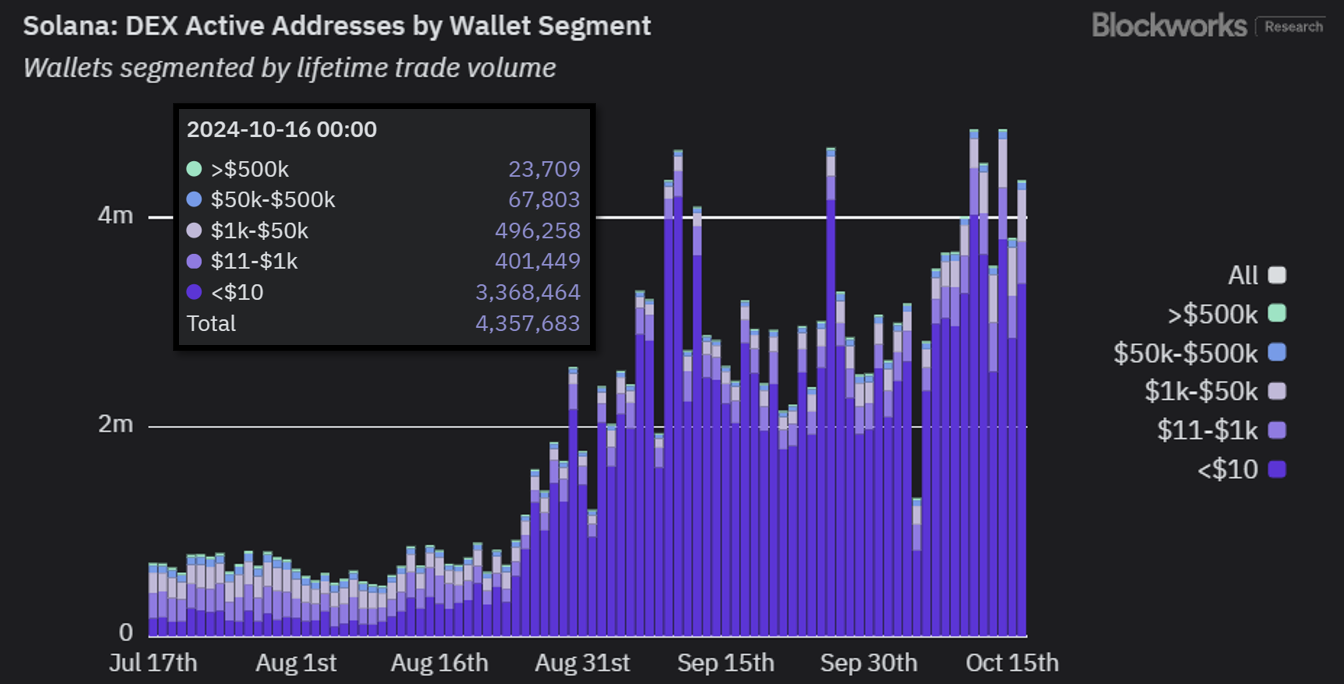
Source: Blockworks Research
Here’s another example I mentioned earlier: Celo L1 (now L2) saw its daily active addresses for sending stablecoins surge to 646,000 in September. This number surpassed Tron, attracting the attention of Vitalik Buterin and CoinDesk.
Upon further analysis, Variant Fund's data analyst Jack Hackworth found that 77% of Celo addresses transferred amounts of less than two cents, primarily because thousands of users received small amounts of funds through a universal basic income protocol called GoodDollar. In both cases, active addresses showed high usage, but upon closer examination, this claim does not hold.
For more related information, you can refer to Dan Smith's research, which focuses on the misuse of daily active addresses.
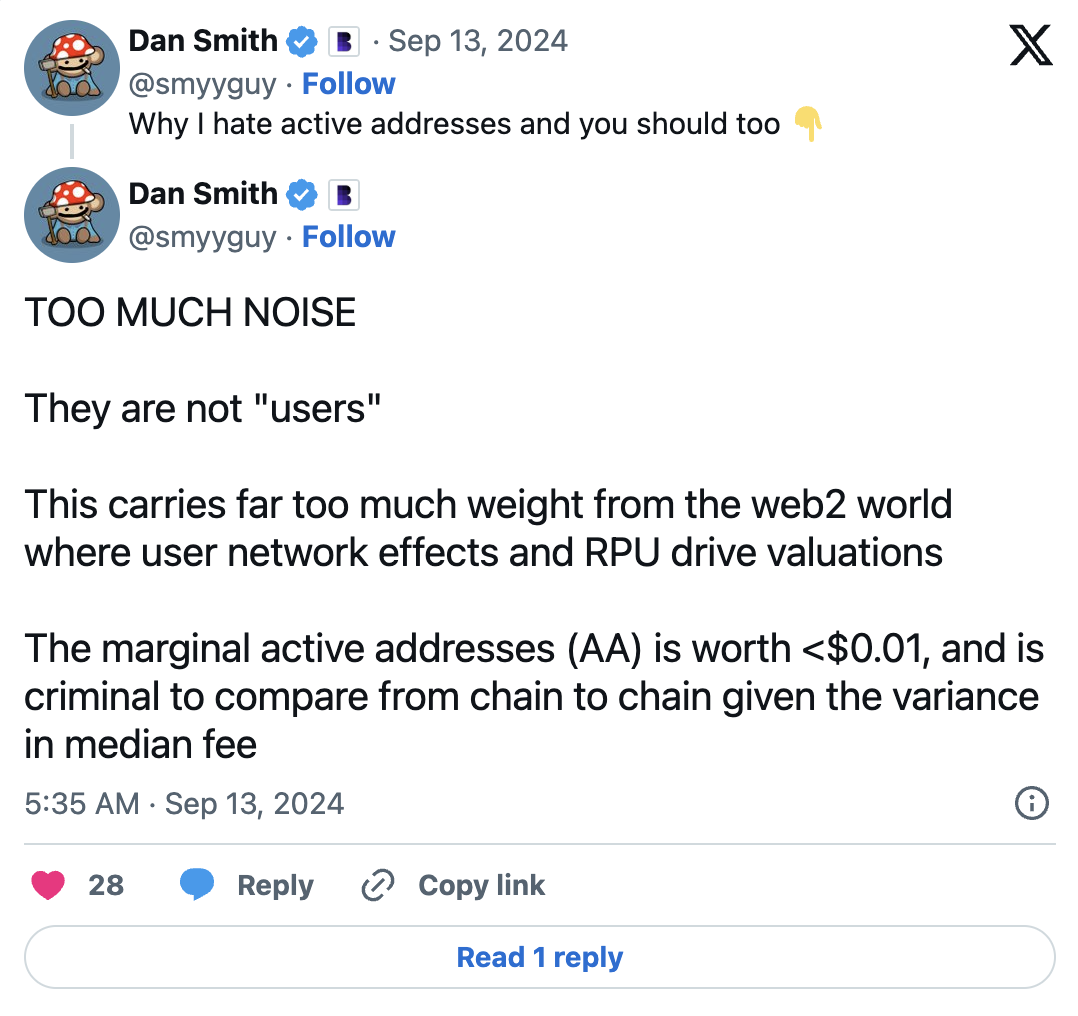
Blockchain Profitability
Instead of focusing on active addresses to study blockchain activity, it is better to look at network fee metrics. Fees reflect the total gas consumption of using the protocol, without considering the issue of "quality" users.
Fees are often used by analysts and investors to determine which blockchains generate the most "revenue." We then consider the token issuance paid to validators as a cost. The result is the blockchain's "profitability."
This is how Token Terminal generates "financial statements" for crypto protocols. For example, the chart below shows that Ethereum L1 has accumulated millions of dollars in losses over the past two months.
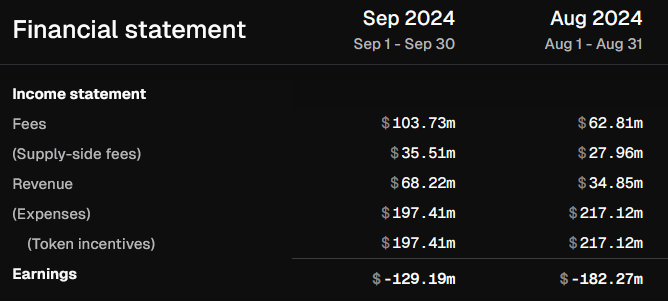
Source: Token Terminal
The only problem is that this calculation does not take into account a key factor: unlike PoW chains (like Bitcoin), users on PoS chains can also easily earn token issuance rewards.
After all, if I can earn a 5% ETH/SOL staking yield from liquid staking platforms like Lido or Jito, why should I care whether the network is "unprofitable"? Therefore, concluding that "Ethereum is unprofitable" by treating token issuance as a cost is problematic.
In the real world, inflation is harmful because when central banks print money in large quantities, the increased money supply reaches different participants in the economy at different times, and those who receive the new money first benefit before "real" price adjustments occur. This is known as the Cantillon effect.
In the PoS blockchain economy, this is not the case, as inflation (i.e., token issuance) is received simultaneously by everyone. Therefore, no one becomes richer or poorer as a result—everyone's wealth remains unchanged.
Instead, we can consider using the Real Economic Value (REV) as an alternative metric. REV combines network fees and MEV tips given to validators but does not treat token issuance as a cost.
Based on this, we can see that Ethereum has actually been profitable over the past two months:
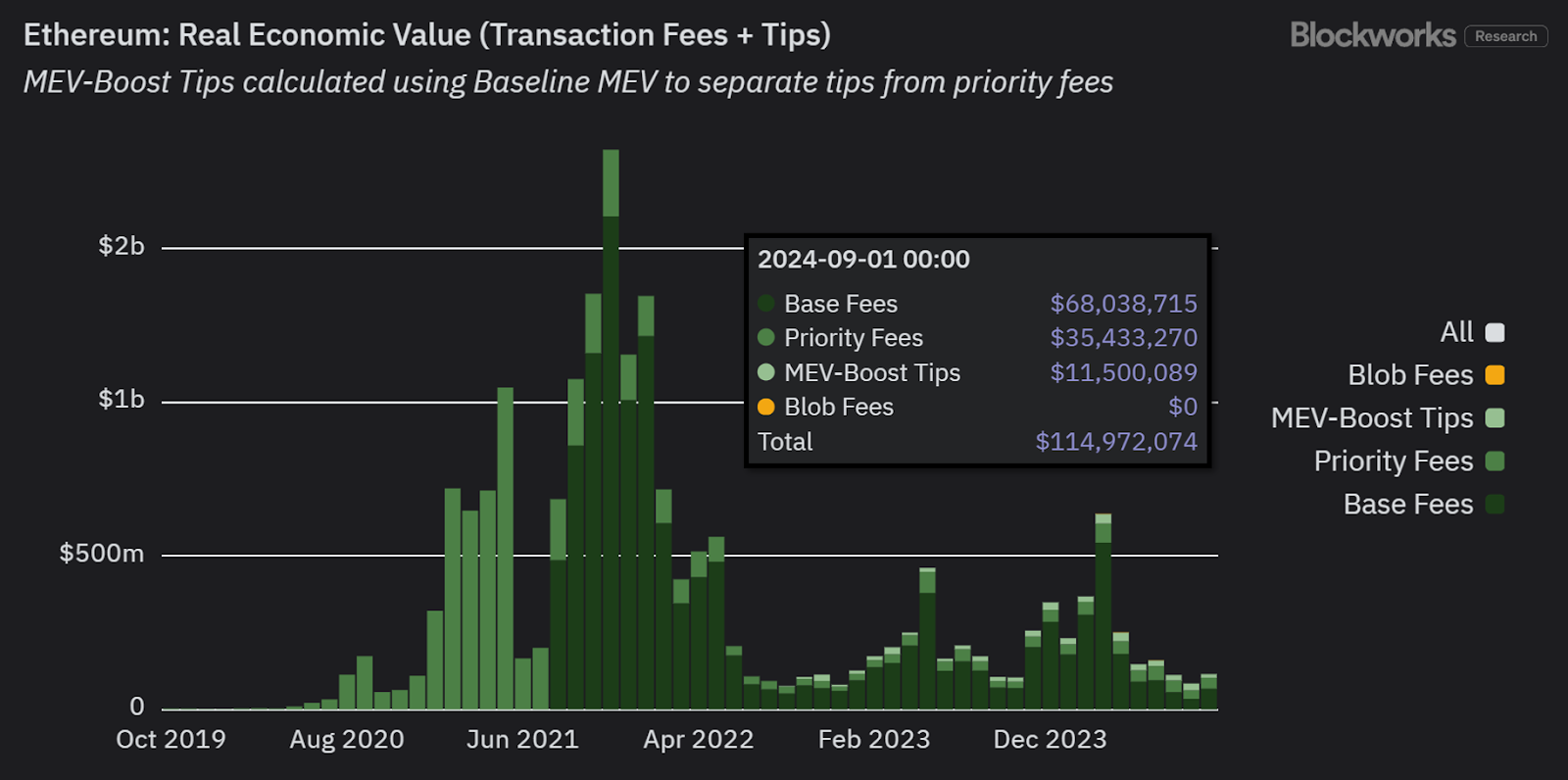
Source: Blockworks Research
REV can be said to be a better metric for assessing the true demand for the network and is a revenue metric that is more comparable to traditional finance (TradFi).
In summary, traditional profit and loss accounting methods are not easily applicable to blockchains.
For more information on this complex topic, you can listen to the recent Bell Curve podcast featuring Jon Charbonneau.
Total Transaction Value (TTV), Not Total Value Secured (TVS)
Oracles are the key infrastructure for blockchains to obtain off-chain data. Without oracles like Chainlink, the blockchain economy cannot reliably reflect real-world prices.
A common way to compare the market share of oracle providers is to use the "Total Value Secured" (TVS) metric, which aggregates all TVL secured by oracles. DefiLlama calculates this explicitly:
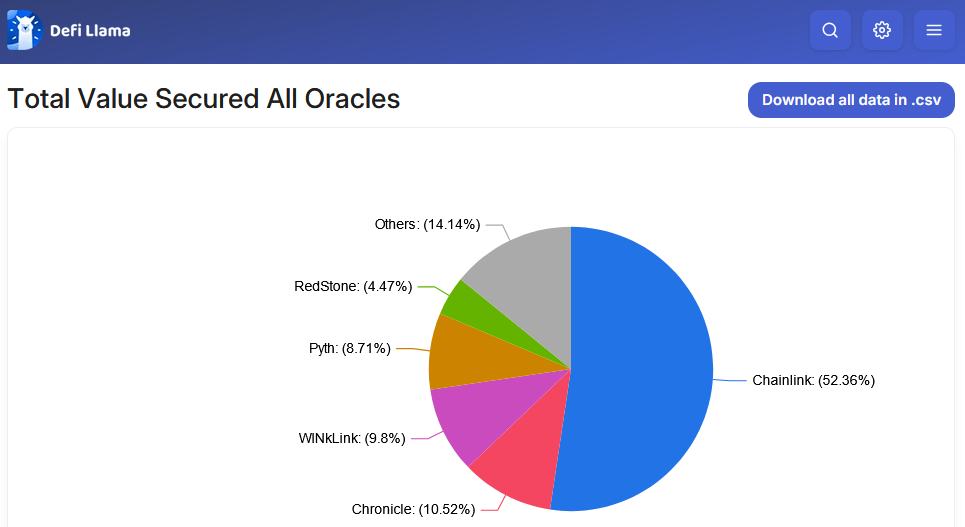
Source: DefiLlama
The problem with TVS is that it obscures the actual activity secured by oracles.
For example, oracles supporting high-frequency trading products (like perpetual contract exchanges) continuously "pull" price updates from off-chain data sources with sub-second latency.
This contrasts with "push" oracles used for lending protocols, which only need to update prices on-chain a few times a day because frequent updates are not required.
TVS focuses on the total value managed by oracles but overlooks the performance intensity of oracle providers.
In other words, it’s like saying a gourmet steak and a salad are both priced at $50 on the menu, so they have the same value to diners. But clearly, the work required to prepare a steak is far greater than that for a simple salad, which is a factor worth considering.
An alternative metric is Total Transaction Value (TTV), which considers the periodic trading volume of using oracles to update pricing.
TTV excludes low-frequency applications such as lending, CDPs, and re-staking, but as Ryan Connor explained, "only 2-9% of oracle price updates come from these low-frequency protocols, which is a small percentage in the cryptocurrency space due to the high volatility of the underlying metrics."
When evaluating oracles using TTV, market share can change significantly.

For more information, you can refer to the Blockworks Research report on how TTV better reflects oracle fundamentals.
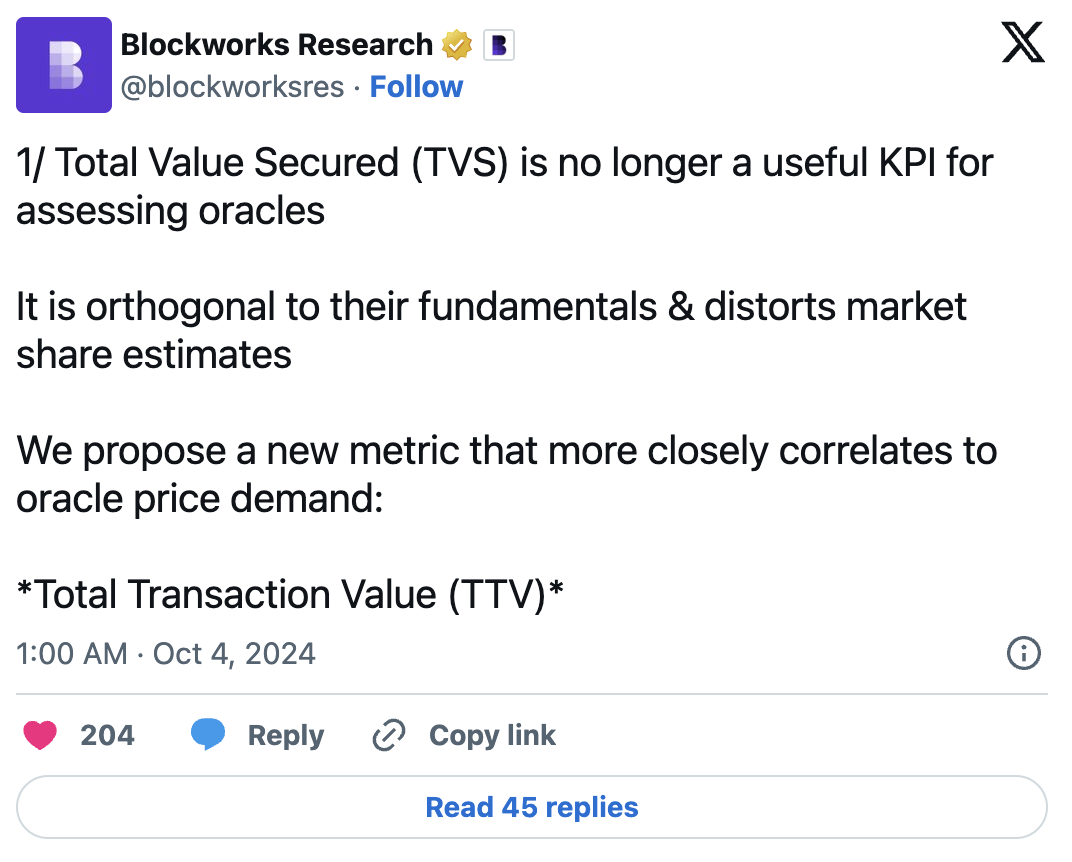
免责声明:本文章仅代表作者个人观点,不代表本平台的立场和观点。本文章仅供信息分享,不构成对任何人的任何投资建议。用户与作者之间的任何争议,与本平台无关。如网页中刊载的文章或图片涉及侵权,请提供相关的权利证明和身份证明发送邮件到support@aicoin.com,本平台相关工作人员将会进行核查。




